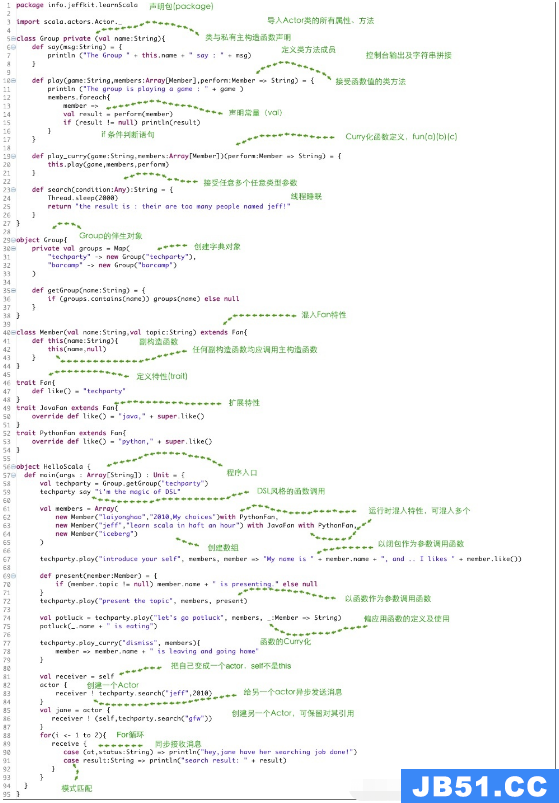我试图用key定义一个Map文字:String,value:(Any)=> String.我尝试以下,但是得到一个语法错误:
def foo(x: Int): String = /...
def bar(x: Boolean): String = /...
val m = Map[String,(Any) => String]("hello" -> foo,"goodbye" -> bar)
解决方法
有趣的是,没有人实际上给了一种可以工作的类型.这是一个:
def foo(x: Int): String = x.toString def bar(x: Boolean): String = x.toString val m = Map[String,(nothing) => String]("hello" -> foo,"goodbye" -> bar)
这样做的原因是因为Function1在输入上是反变体的,所以(nothing)=> String是(Int)=>的超类串.它也是输出上的变体,所以(nothing)=>任何一个都将是任何其他Function1的超类.
当然,你不能这样使用它.没有清单,你甚至不能发现什么是原始类型的Function1.你可以尝试这样的东西:
def f[T : Manifest](v: T) = v -> manifest[T] val m = Map[String,((nothing) => String,Manifest[_])]("hello" -> f(foo),"goodbye" -> f(bar)) val IntManifest = manifest[Int] val BooleanManifest = manifest[Boolean] val StringManifest = manifest[String] m("hello")._2.typeArguments match { case List(IntManifest,StringManifest) => m("hello")._1.asInstanceOf[(Int) => String](5) case List(BooleanManifest,StringManifest) => m("hello")._1.asInstanceOf[(Boolean) => String](true) case _ => "UnkNown function type" }


